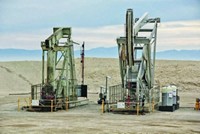Advertisement
Grab your lab coat. Let's get started
Welcome!
Welcome!
Create an account below to get 6 C&EN articles per month, receive newsletters and more - all free.
It seems this is your first time logging in online. Please enter the following information to continue.
As an ACS member you automatically get access to this site. All we need is few more details to create your reading experience.
Not you? Sign in with a different account.
Not you? Sign in with a different account.
ERROR 1
ERROR 1
ERROR 2
ERROR 2
ERROR 2
ERROR 2
ERROR 2
Password and Confirm password must match.
If you have an ACS member number, please enter it here so we can link this account to your membership. (optional)
ERROR 2
ACS values your privacy. By submitting your information, you are gaining access to C&EN and subscribing to our weekly newsletter. We use the information you provide to make your reading experience better, and we will never sell your data to third party members.
Environment
Fracking Inquiry Justified
Oversight: Inspector general’s report supports EPA action on methane leaks to drinking water
by Jeff Johnson
January 6, 2014
| A version of this story appeared in
Volume 92, Issue 1

EPA had legal authority to investigate and take action on complaints from Texas residents about methane leaks to drinking water from hydraulic fracturing, or fracking. That’s the conclusion of a report by EPA’s Office of Inspector General (OIG). EPA could have done more to protect the public from methane exposure through drinking water, the report adds.
OIG examined the agency’s response in 2010 to complaints from residents of Parker County, Texas, of high levels of methane in two drinking water wells. The residents had turned to the Railroad Commission of Texas, which oversees oil and gas development as well as pollution. Dissatisfied with the commission’s response, according to OIG, the residents went to EPA, which conducted an investigation through its emergency authorities.
EPA found methane at unsafe and explosive levels in well samples. Using isotopic analysis, EPA concluded that the gas in groundwater matches the gas produced by Range Resources Corp. at two nearby fracking sites.
EPA issued an emergency order requiring Range to provide drinking water to residents and take mitigation actions.
The Railroad Commission and Range disagreed with EPA’s analysis, according to the report. Range did, however, provide residential drinking water for a time, but did nothing more. EPA began to take legal action but then opted to accept a nonbinding agreement with Range that the company will conduct additional testing at more wells.
OIG recommends that EPA continue evaluating these wells and closely oversee Range’s testing. It also calls for EPA to continue to advise residents of possible contamination.
Residents living near fracking sites in Pennsylvania and Wyoming, as well as in Parker County, have complained of methane-contaminated water and have urged EPA to take stronger action. Also, a small but growing body of peer-reviewed research has found methane contamination in groundwater near drilling sites (C&EN, July 1, 2013, page 15).
Oil and gas drilling advocates have downplayed the claims. The OIG study was requested by Sen. James M. Inhofe (R-Okla.) and five other Republican senators who say EPA exceeded its authority in Parker County.




Join the conversation
Contact the reporter
Submit a Letter to the Editor for publication
Engage with us on Twitter